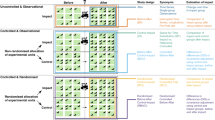Abstract
To determine whether ethical issues concerned with field research are addressed in the peer-review process, instructions to authors and reviewers of 141 (mainly natural science) journals were examined to ascertain how often ethical issues were mentioned. Only one-third (n=41) of responding journals addressed ethical issues in their instructions to authors or reviewers. When ethical issues were considered, most of the journals limited their concerns to ethical issues associated with animal and general human experimentation. No journal mentioned ethical practices in working with indigenous peoples or on traditional lands. Only two journals addressed the ethics of research in sensitive areas in their instructions to authors, only one in its instructions to reviewers. We suggest that peer-reviewed journals respond to an emerging issue in ecological research by formally incorporating research ethics into their instructions to authors and reviewers. Furthermore, these instructions should address the ethical issues associated with field research and in working with indigenous peoples and on traditional lands.
Similar content being viewed by others
References
Farnsworth, E.L., & Rosovsky, J. (1993) The Ethics of Ecological Field Experimentation. Conservation Biology 7: 463–472.
Putman, R.J. (1996) Ethical considerations and animal welfare in ecological field studies, in: Cooper, N.S. & Carling, R.C.J. eds. Ecologists and Ethical Judgements. Chapman and Hall, Melbourne: 123–135.
Walters, C.J. & Green, R. (1997) Valuation of experimental management options for ecological systems. Journal of Wildlife Management 61: 987–1006.
Anderson, I. (1997) Damage limitation: How can scientists work in sensitive ecosystems without harming them? A new set of Australian guidelines could help. New Scientist 20/27 December 1997: 16–17.
Britt, D. (1984) Ethics, ethical committees and animal experimentation. Nature 311: 503–506.
Butler, D. (1997) European grants to face ethics scrutiny. See Nature homepage: http://www.nature.com. News Item: 4 December.
National Health and Medical Research Council (NHMRC). (1998) General help and guidelines for project grant applications for 1999. Canberra, Australia (See http://www.health.gov.au/nhmre/research/grants/project.htm)
Dawkins, M.S. (1980) Animal Suffering: the Science of Animal Welfare. Chapman and Hall, London.
Universities Federation for Animal Welfare. (1986) The UFAW Handbook on the Care and Management of Laboratory Animals. Sixth Ed. Longmans, London.
AVMA (American Veterinary Medical Association). (1987) Colloquium on recognition and alleviation of animal pain and distress. Journal American Veterinary Medical Association 191: 1184–1296.
Vaughan, C. (1988) Animal research: Ten years under siege. Bioscience 38: 10–13.
National Research Council. (1988) Use of Laboratory Animals in Biomedical and Behavioral Research. National Academy Press, Washington DC.
Canadian Council on Animal Care. (1992) Guide to the Care and use of Experimental Animals, Vols 1 and 2.: Canadian Council on Animal Care. Ottawa: Ontario.
American Society of Mammalogists Ad hoc Committee on Acceptable Field Methods in Mammalogy. (1987) Acceptable field methods in mammalogy: preliminary guidelines approved by the American Society of Mammalogists. Journal of Mammalogy, Supplement 68:4.
Association for the Study of Animal Behaviour. (1998) Guidelines for the treatment of animals in behavioural research and teaching. Animal Behaviour 55: 251–257.
Motluk, Alison. (1997) They ain’t heavy...Why have seal rescuers suddenly got worried about radio tags? New Scientist 13 December 1997:22.
Rolston III, H. (1981) Values in nature. Environmental Ethics 3: 113–128.
Goodin, R.E. (1983) Ethical principles for environmental protection. In: Elliot, R.E. & Gare, A. eds. Environmental Philosophy. University of Queensland Press, St. Lucia, Australia: 3–20.
Cahen, H. (1988) Against the moral considerability of ecosystems. Environmental Ethics 10: 195–216.
Loftin, R.W. (1992) Scientific collecting. Environmental Ethics 14: 253–264.
Hutchings, P. (1997) ACRS Submission to ASTEC on Ethics of Manipulative Research. Australian Coral Reef Society Spring Newsletter 26: 26–29.
ASTEC. (1998) Environmental Research Ethics: National principles and guidelines for the ethical conduct of research in protected and environmentally sensitive areas. The Australian Science, Technology and Engineering Council, Australian Government Publishing Service, Canberra. (See http://www.astec.gov.au).
Schmink, M., Redford, K.H. & Padoch, C. (1992) Traditional peoples and the biosphere: framing the issues and defining the terms. In Redford, K. & Padoch, C. eds. Conservation of neotropical forests: working from traditional resources use. Columbia University Press, New York: 3–10.
Yukon Department of Tourism. (1997) Guidebook of scientific research in the Yukon. Heritage Branch, Yukon Department of Tourism, Whitehorse, Yukon.
BAS (British Antarctic Survey). (1991) Environmental management within the British Antarctic survey. BAS Environmental Information Leaflet. No. 1.
Australian Antarctic Division. (1996) Guidelines for Australian Research involving animal experimentation or use of ionising radiation in the Antarctic and on sub-Antarctic Islands. Commonwealth of Australia. (See http://www.antdiv.gov.au).
Author information
Authors and Affiliations
Corresponding author
Rights and permissions
About this article
Cite this article
Marsh, H., Eros, C.M. Ethics of field research: Do journals set the standard?. SCI ENG ETHICS 5, 375–382 (1999). https://doi.org/10.1007/s11948-999-0028-3
Received:
Revised:
Accepted:
Issue Date:
DOI: https://doi.org/10.1007/s11948-999-0028-3




